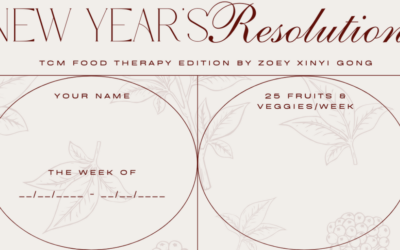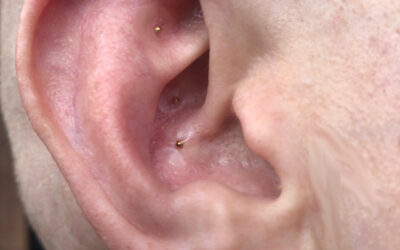Now that cannabis has been granted recreational status here in NYC, there are more and more trendy shops hustling recreation-geared products with roots in Traditional East Asian Medicine. Looking for suggestions outside of the commercial hype on how to best experience the medicinal benefits of this now ubiquitous herb? In addition to the following information, I will be presenting and sharing kratom tea, a Southeast Asian medicinal herb frequently sold alongside cannabis, at the end of the month at a special event in the East Village.
Cannabis in Medicinal Herbology
The use of cannabis flowers and extracts, particularly those containing CBD, has been widespread worldwide over the past decade. Did you know that this plant is believed to have originated in Central Asia becoming a staple in traditional Chinese medicine for at least 1800 years? Cannabis seeds, female flowers, leaf, and root, as well as the cortex of the stalk and the water used to process the stalk into fiber. The Divine Farmer’s Classic of Materia Medica (from the 1st or 2nd century AD) sums up its use as:
“Flavor: acrid; balanced. Governs the five taxations and seven damages, benefits the five viscera, and descends blood and cold qi; excessive consumption causes one to see ghosts and run about frenetically. Prolonged consumption frees the spirit light and lightens the body.”
Not only is cannabis lauded in this text for a wide range of medicinal effects, but there are also use suggestions for spiritual benefits as well as a caution on what you may notice if you overuse it. Interestingly, there is little evidence that cannabis was either abused or prohibited in China before the first documented seizures of imported cannabis products in 1936 [1]. This may be due to the way that cannabis plants have evolved over the centuries through cultivation and hybridization changing the medicinal properties as well as cultural factors that impact their use.
Modern research fueling a resurgence in the medicinal use of cannabis reveals that what is viewed as the active ingredients in cannabis, phytocannabinoids (pCBs), enact a wide range of therapeutic benefits via the endocannabinoid system (ECS) which is involved in homeostatic regulation. In the last decade, the most abundant pCB in Cannabis sativa, CBD, has been heavily studied for a variety of pain and nervous system conditions. In contrast to Δ9-THC, another pCB, CBD does not induce psychotropic effects [2]. While this lack of perception alteration may be preferable in some cases, whole herb preparations with synergistic effects from multiple pCBs, referred to as the “entourage effect,” were thought to contribute to overall quality of life improvement for people in one study [3]. This use of medical cannabis also led to the reduction of prescription drugs with a host of adverse effects including opioids and other pain medications, antidepressants, anti-seizure drugs and benzodiazepines.
Reading about the historical and modern medicinal applications, it is shocking that this herb is or was prohibited in so many places and so many people are still serving sentences for possession. Have you wanted to explore the therapeutic effects of cannabis, but are not sure where to start? Have you taken some cannabis products, but didn’t get the effect you were looking for or it stopped working for you? You can book a Telehealth consultation with me to have a custom formula developed for you. These sessions may be covered by insurance as well.
The Sidekick, Kratom
A somewhat lesser-known herb rooted in Southeast Asian medicine that is frequently co-marketed with cannabis products is kratom. Kratom has a wide variety of medicinal applications loosely categorized by ‘strain.’ The concept of strains in kratom is a bit of a misnomer– the different colors in the veins of the leaves correspond to the maturity of the leaves at the time of harvesting and indicate which alkaloids are more prominent at that growth stage. The simplified spectrum, in order from more energizing to more sedating, runs from white to green to yellow to red.
In traditional medicine terms, kratom relieves pain (blocks reception and counters inflammation), calms ‘Shen’/mind (both anti-anxiety/sedative and mild anti-depressive), astringes ‘Lung Qi’ (stops cough), and astringes the Large Intestine (stops diarrhea) [4]. Modern research focuses on its use as a safer alternative to opioids for pain or anxiety– safer because it is a partial opioid agonist, as opposed to a full agonist like morphine, moderating its effects in a manner that reduces addictive potential. It also acts on the serotonin receptors in the brain explaining other mental-emotional benefits [5].
Anecdotally, I have found it is very helpful for patients who are sensitive to acupuncture treatment to take this 30-60 minutes before their appointment. I’m documenting this phenomenon to publish a case series on my findings in the future! This is the dosing and preparation method I use for both powder and crushed leaf forms of kratom:
-> 1-5 grams = 1 dose; 1 tsp powder = 3 grams
-> Brewing in a cup or French press: let steep for 20 minutes
-> For cold brew: put in a mason jar and refrigerate for 12-48 hours
-> Always add an acid while steeping (juice from half a lemon, lime or apple cider vinegar) to help extract the medicinal compounds
The acid also has the added benefit of masking some of the bitterness that you are sure to notice when you first try kratom! The good news is that taste can be acquired once your body-mind associates the substance with positive benefits [6]. I highly recommend downloading the recipes by Top Tree Herbs for some delicious options!
References:
[1] Brand, E. J., & Zhao, Z. (2017). Cannabis in Chinese Medicine: Are Some Traditional Indications Referenced in Ancient Literature Related to Cannabinoids?. Frontiers in pharmacology, 8, 108. https://doi.org/10.3389/fphar.2017.00108
[2] Schmiedhofer, P., Vogel, F. D., Koniuszewski, F., & Ernst, M. (2022). Cys-loop receptors on cannabinoids: All high?. Frontiers in physiology, 13, 1044575. https://doi.org/10.3389/fphys.2022.1044575
[3] Lucas P., Boyd S., Milloy M. J., Walsh Z. (2021). Cannabis significantly reduces the use of prescription opioids and improves quality of life in authorized patients: Results of a large prospective study. Pain Med. 22, 727–739. 10.1093/pm/pnaa396
[4] Tierra, M. (2017). Kratom: Uses, Dosage, Administration, and Contraindications. Planet Herbs. https://planetherbs.com/blogs/michaels-blogs/kratom-uses-dosage-administration-and-contraindications/
[5] Buckhalter, S., Soubeyrand, E., Ferrone, S., Rasmussen, D. J., Manduca, J. D., Al-Abdul-Wahid, M. S., Frie, J. A., Khokhar, J. Y., Akhtar, T. A., & Perreault, M. L. (2021). The Antidepressant-Like and Analgesic Effects of Kratom Alkaloids are accompanied by Changes in Low Frequency Oscillations but not ΔFosB Accumulation. Frontiers in pharmacology, 12, 696461. https://doi.org/10.3389/fphar.2021.696461
[6] Pollan, Michael. This Is Your Mind On Plants. New York, NY, Penguin Press, 2021




